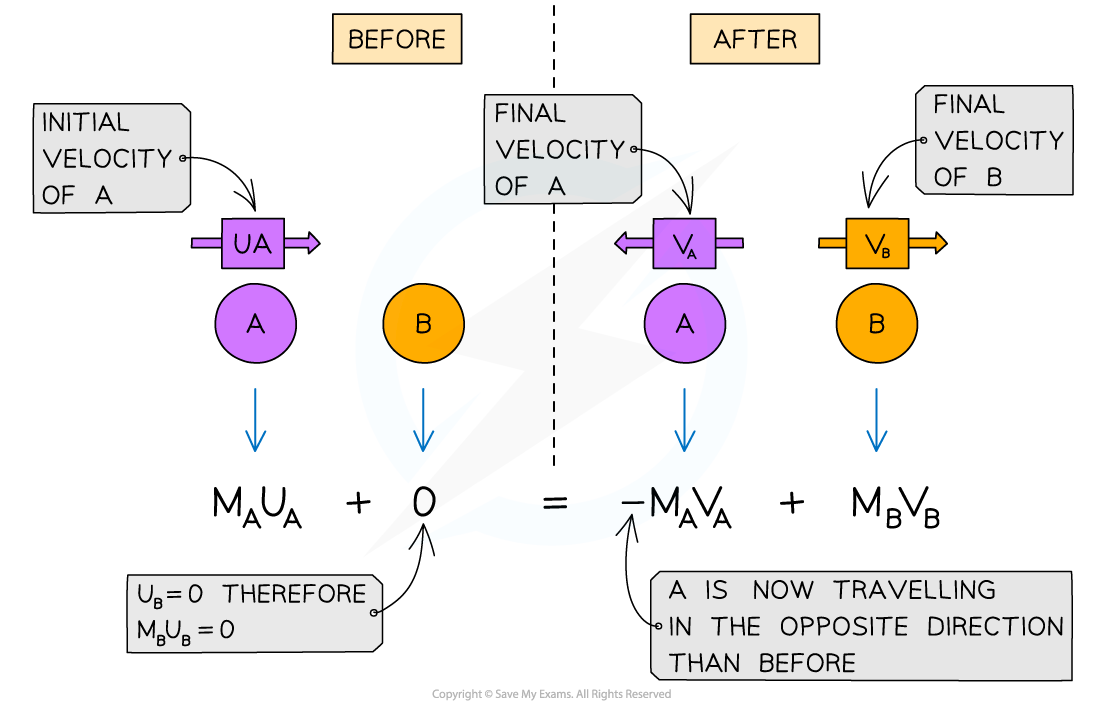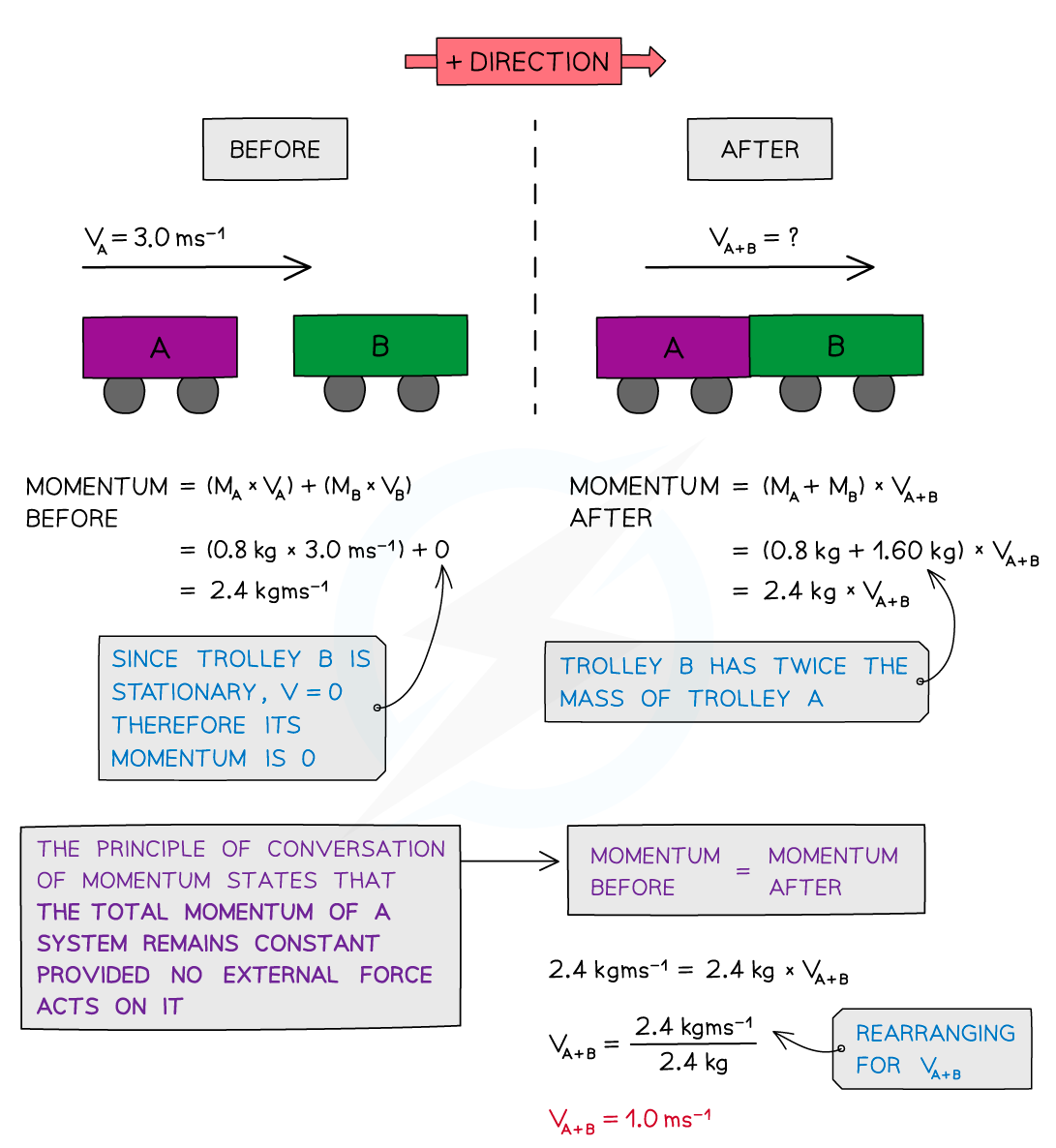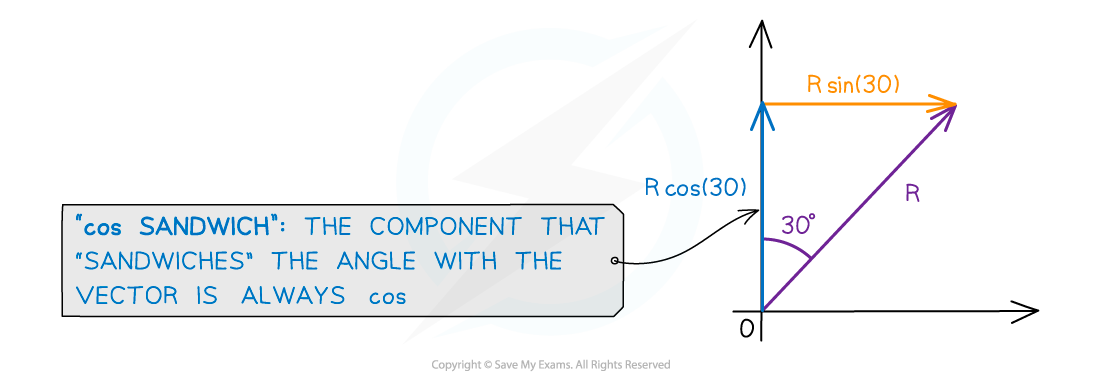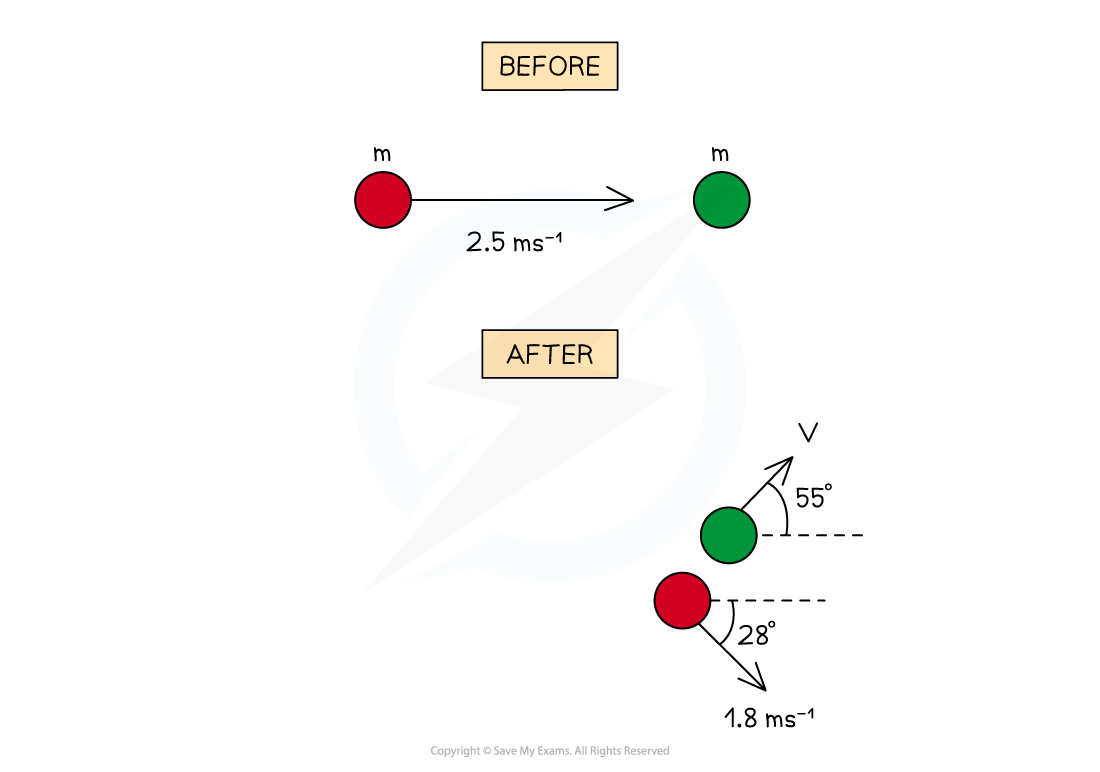Applying Conservation of Linear Momentum (Edexcel International A Level (IAL) Physics) : Revision Note
Applying Conservation of Linear Momentum
The principle of conservation of linear momentum states:
The total momentum before a collision = the total momentum after a collision provided no external force acts
Linear momentum is the momentum of an object that only moves in a straight line
Momentum is a vector quantity
This means oppositely-directed vectors can cancel each other out resulting in a net momentum of zero
If after a collision an object starts to move in the opposite direction to which it was initially travelling, its velocity will now be negative
Momentum, just like energy, is always conserved
Conservation of Linear Momentum in 1D

The conservation of momentum in 1D, for two objects A and B colliding then moving apart
Worked Example
Trolley A of mass 0.80 kg collides head-on with stationary trolley B whilst travelling at
3.0 m s–1. Trolley B has twice the mass of trolley A. On impact, the trolleys stick together.
Using the conservation of momentum, calculate the common velocity of both trolleys after the collision.
Answer:

Examiner Tips and Tricks
Momentum is a vector quantity, therefore, you should always define a direction to be 'positive' when applying the principle of conservation of momentum. In this worked example, we implicitly took velocity 'to the right' as the positive direction.
Sometimes, however, you might encounter two objects moving towards each other before colliding. If both objects have the same mass m and speed v, then the total momentum (before collision) is zero, because ptotal = (mv) + (–mv) = 0. Note the negative sign indicates a body travelling in the opposite direction.
Conservation of Linear Momentum in 2D
For objects moving in 2D, there are components of momentum to consider
This is similar to projectile motion in 2D, in which we consider horizontal and vertical components of motion

Vector R split into its vertical, R cos (30) and horizontal, R sin (30), components
Each component of momentum is conserved separately
Since momentum is a vector, it can be resolved into horizontal and vertical components
The sum of horizontal components will be equal before and after a collision
The sum of vertical components will be equal before and after a collision
Worked Example
A red snooker ball, travelling at 2.5 m s–1 collides with a green snooker ball, which is at rest. Both snooker balls have the same mass m.
The angle of collision is such that the red ball moves off at 28° below the horizontal at 1.8 m s–1 and the green ball moves off at 55° above the horizontal, with a speed v, as shown.

Determine the size of v.
Answer:
Step 1: Write the conservation of linear momentum for horizontal components
The question is worded in terms of the horizontal direction, so write:
Horizontal momentum before = horizontal momentum after
Step 2: Resolve the velocity of each ball to find the horizontal component:
Since momentum p = mv, then the horizontal component of momentum phoriz = mvhoriz
Therefore, the horizontal component of the red ball is 1.8 cos 28°
The horizontal component of the green ball is v cos 55°
Step 3: Substitute quantities into the conservation of momentum
Horizontal momentum before = horizontal momentum after
mured + mugreen = mvhoriz(red) + mvhoriz(green)
m (2.5) + 0 = m (1.8 cos 28°) + m (v cos 55°)
Step 4: Simplify and rearrange to calculate v
2.5 = 1.8 cos 28° + v cos 55°
2.5 = 1.6 + v cos 55°
0.9 = v cos 55°
v = 1.6 m s–1
Examiner Tips and Tricks
Generally speaking, whenever you see any vector given at an angle to the horizontal or the vertical (e.g. velocity, or momentum), think "resolve"! It's extremely likely you will need to consider the separate components of motion for a projectiles question or for a conservation of momentum question.
Questions which ask you to use the principle of conservation of linear momentum in 2D are usually worth a lot of marks, so make sure you practise lots of questions involving resolving vectors!

You've read 0 of your 5 free revision notes this week
Sign up now. It’s free!
Did this page help you?
